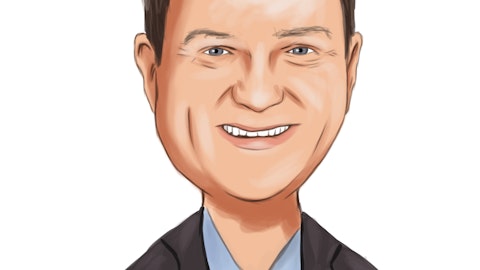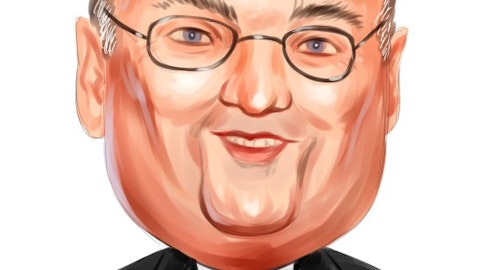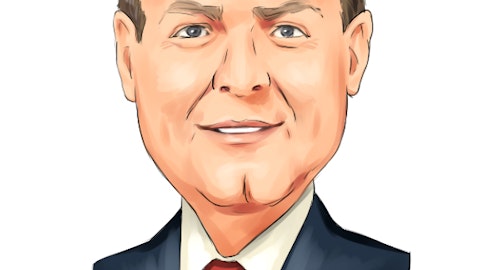And so combining all those impacts on a life. And the way I look at it is a life is changed as much by a brand new device arriving in their house as it is by an app that helps them take a medicine that keeps them out-of-hospital. So, that’s how we sort of look at lives change. Yes, 150 million calendar year 2023, you got it, right. I mean, you got the math, the mathematics there is the CAGR is 17.5% volume growth of the lives that we touch over the next three calendar years through 2025 and we’re going to do that. We’re going to get more and more patients on CPAPs, APAPs, bi-levels, more and more on ReSupply and masks systems, and then more and more on our digital health platforms. And we’ve got — it’s a lofty goal and it’s a stretch goal, but we believe we can get there and change 250 million lives by 2025.
Thanks Suraj. Great question.
Operator: Thank you. Next question is coming from Matthew Mishan from KeyBanc Capital Markets. Your line is now live.
Mathew Mishan: Hey, good afternoon Mick. Just a quick question on the gross margin. Just how has the productivity of manufacturing and shipping improved over the last few months? Are you guys still working through, like high-cost inventory? How much spot buying is there? And then is sort of the decrease in gross margins — slight decrease in gross margin, mainly on the mix of devices versus masks and accessories?
Mick Farrell: Yes, Matt, I’ll start and then I’ll hand to Rob Douglas, our President and Chief Operating Officer to cover in detail. But just at the start, yes, there was a sequential decrease in gross margin. One way, Matt, I could have avoided that is tell the team don’t sell all those CPAPs and APAPs, to create, right because it was great gross profit dollars to the business and was great to change a patient’s life buy a new device, but I couldn’t get my GM 70, 80 basis points up by saying slow down those CPAP and APAP sales. Of course, we didn’t do that. The right thing is the humanitarian aspect to get those devices that we pivoted, our supply chain reengineered and redesigned to get them to market and you saw extraordinary growth, 41% growth in our US-based device market.
Now, that’s not our highest gross margin, its diluted to GM percentage, but it’s contributory and positive to gross profit dollars. And so it’s good for patients, and it’s good for our stakeholders. So, that’s what we did. But Rob, yes, that’s a really good question — first part of the question.
Rob Douglas: Yes, Matt, thanks for question. There’s lots of factors in that gross margin and you’re asking specifically about productivity and productivity improvements. We’ve done a whole lot of work around volume improvements and really driving volume and all of our discussions with suppliers have been increasing volume and reliability of delivery. Our normal settings in normal world is we have a long-term outlook volume commitment and we’re looking at optimization and pricing improvements and things like that. Those activities have pretty well been on hold while we’ve been doing these — this sort of real scramble that drive volumes. Freights a similar situation, although we are seeing freights probably going to improve faster than some of these other costs that were in there.
But totally in terms of our supply chain culture, we absolutely will be aiming to go back to our continuous improvement situation where we have a really strong volume leverage gain. We continue to drive the volumes in a systematic way and we use that to drive productivity and drive cost out of the system.
Operator: Thank you. Our next question is coming from Steve Wheen from Jarden. Your line is now live.





